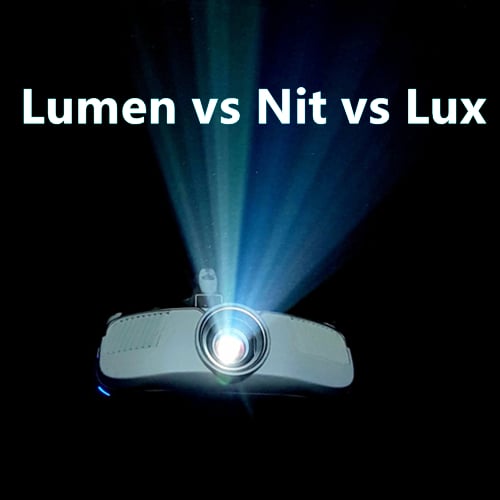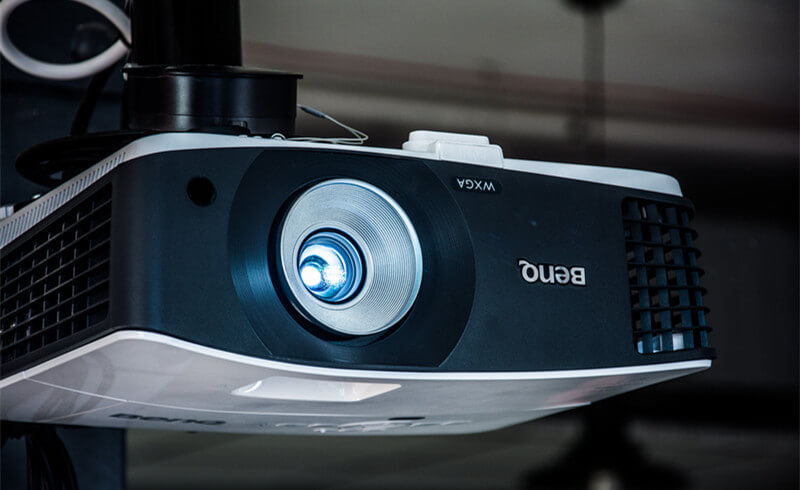



As we all know, brightness is a key factor that will influence the projection image and its viewing effect. In this guide, we will introduce and compare three common photometry units in the projector industry, including lumen, nit, and lux.
| Photometry Units | Symbol | Meaning | Notes |
| Lumen | lm (= cd⋅sr) | Luminous flux | Luminous energy per unit time |
| Nit | cd/m2 | Candela per square meter | Luminous flux per unit solid angle per unit projected source area. |
| Lux | lm/m2 | lumen per square meter | Luminous flux incident on a surface |
Lumen is widely used for projector brightness, and it is a unit that measures luminous flux or light output.
Nit measures the brightness in a specific area or candela per square meter. This unit is also widely seen in the TV industry.
Lux is similar to nit as it also represents the brightness per square meter. The difference is the lux measures the lumen per square meter instead of candela.
Though the ANSI lumen is a standard and recognized unit of projector brightness, some projector sellers label their projectors with various lumens units, for example, light source lumens, LED lumens, and ISO lumens. If the projector brightness is fixed, the value of the light source is much bigger than ANSI lumens or ISO lumens. For example, a projector may be labeled as 3,000 lumens but it only measures 100 ANSI lumens.
You can use the ANSI lumens calculator to convert different lumen units.
Generally speaking, if you are using a projector in a dark room, then the required brightness is smaller. However, if you want to use the projector in a well-lit room, then the required brightness is bigger.
You can check the table below to choose the brightness based on the lighting of your rooms. The image size also influences the required brightness of a projector. The bigger the image, the bigger brightness the projector required.
Related Posts